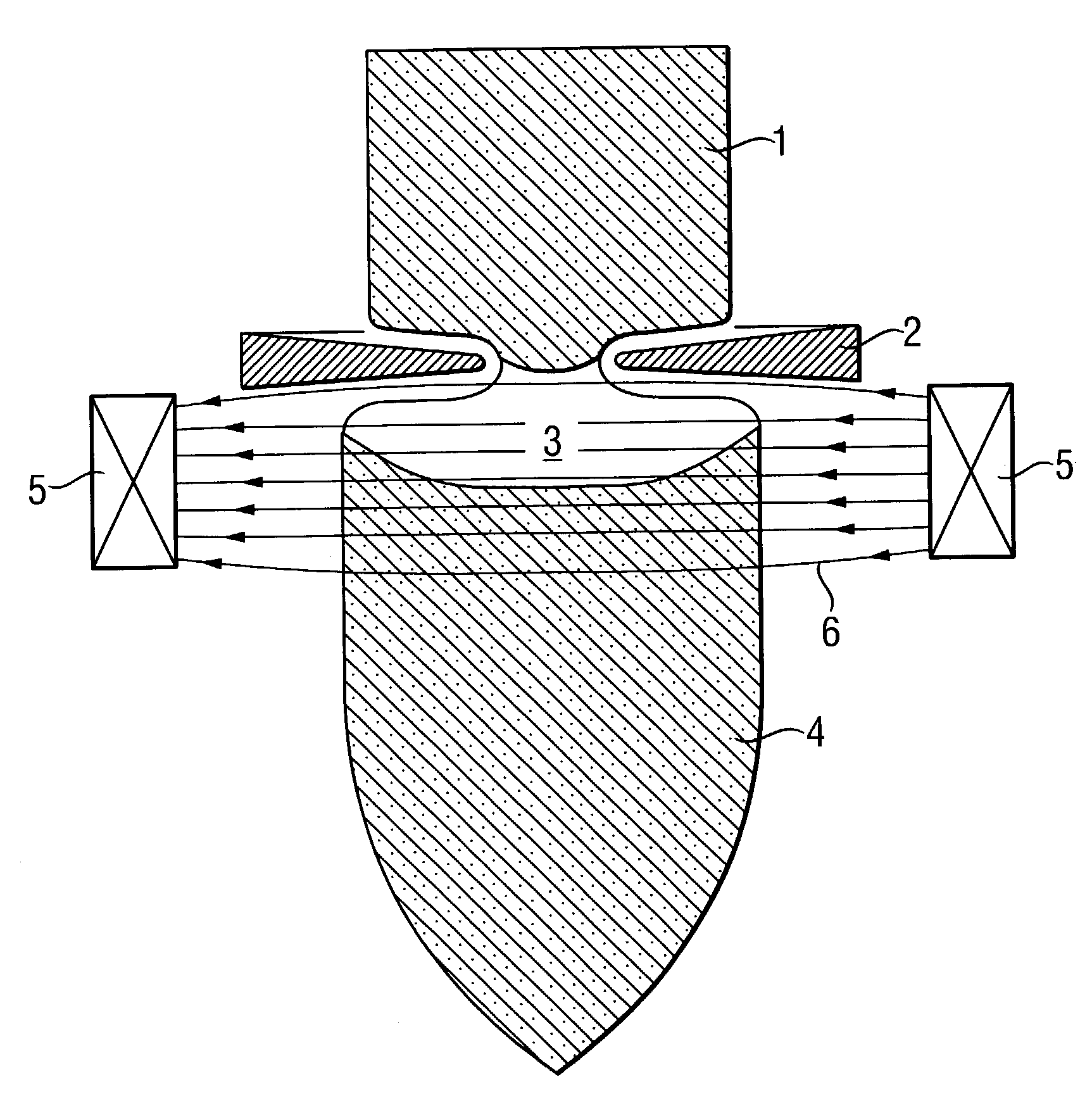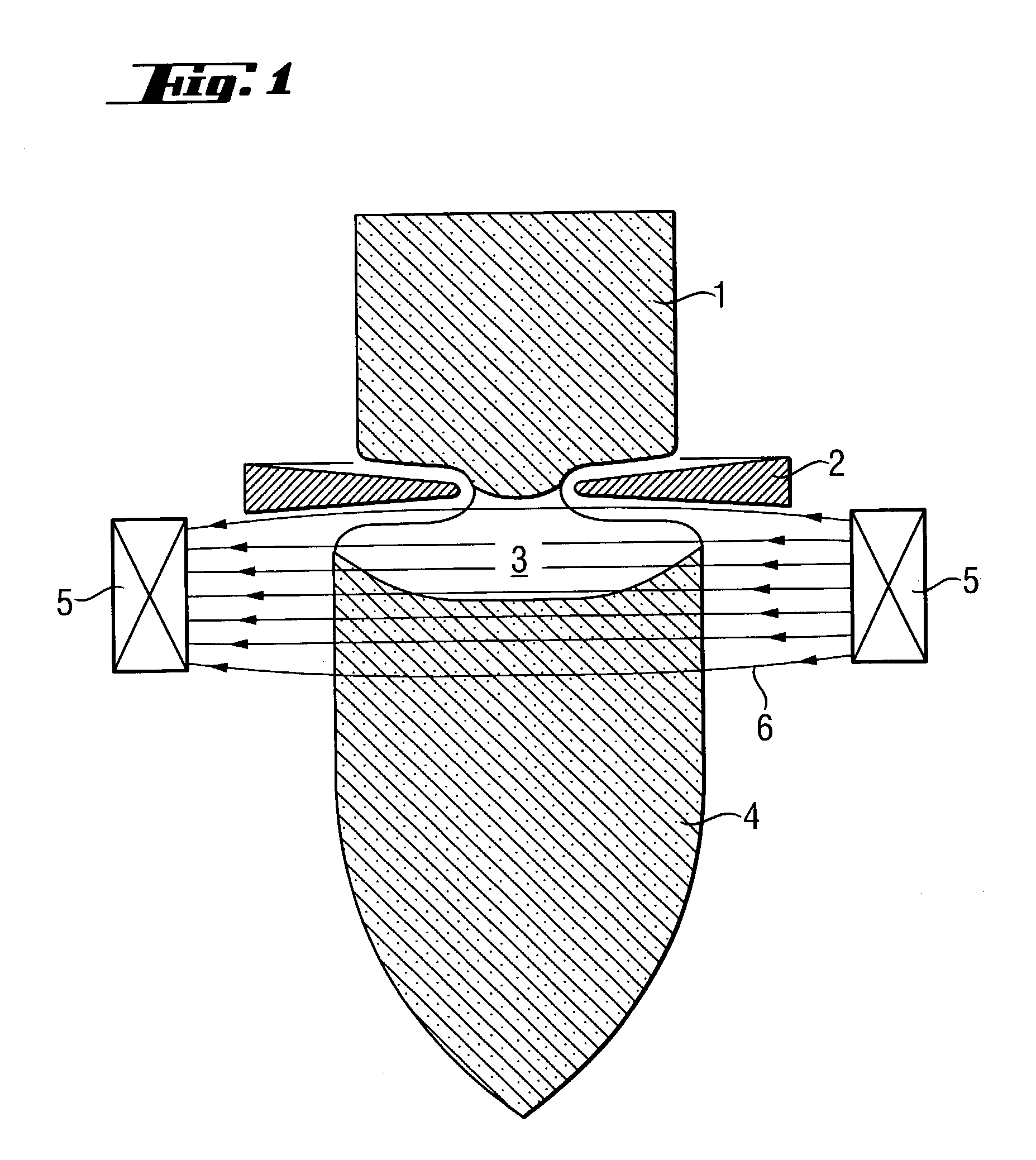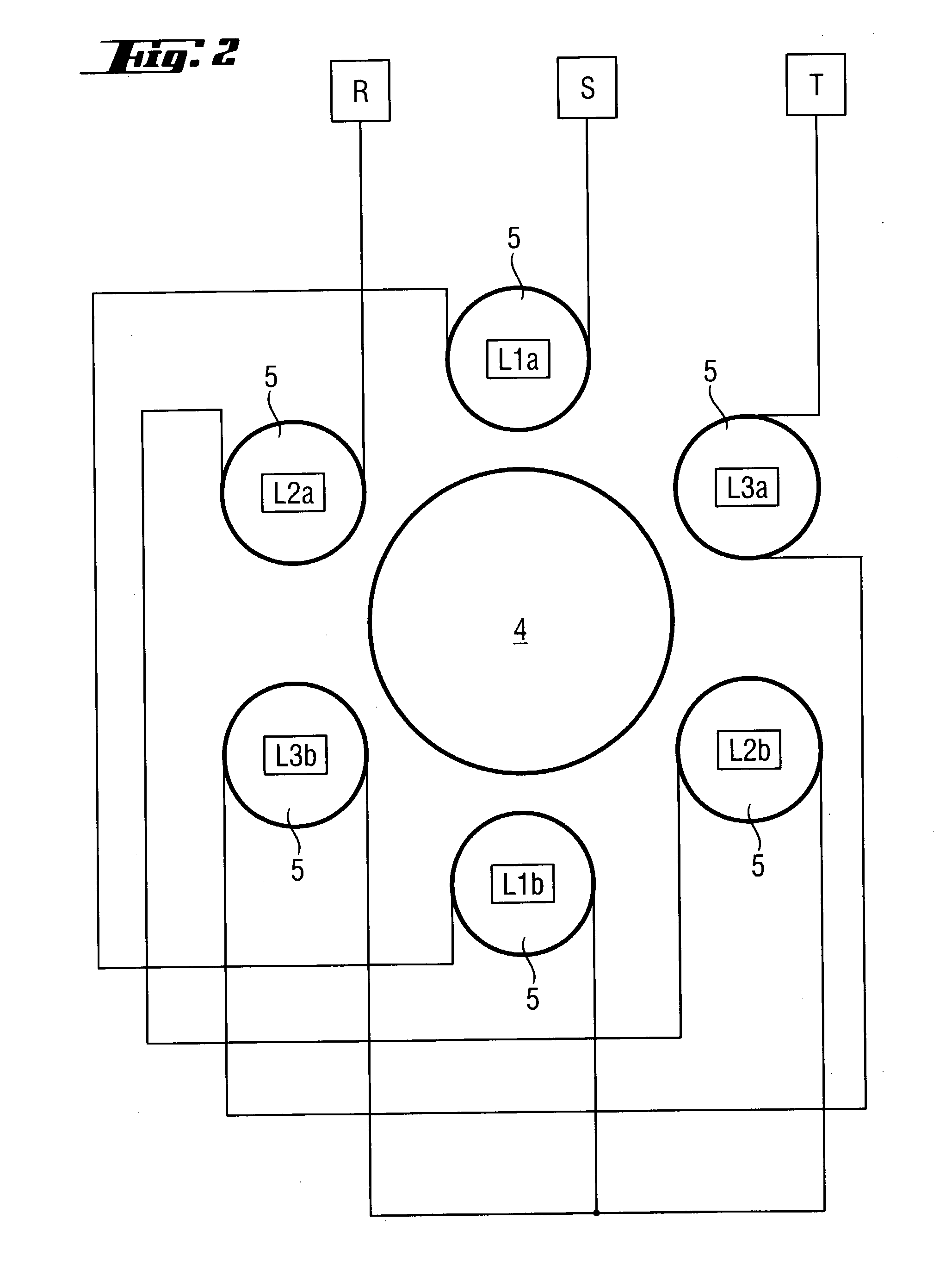Doped semiconductor wafer of float zone pulled semiconductor material, and process for producing the semiconductor wafer
a technology of float zone and semiconductor material, which is applied in the direction of crystal growth process, polycrystalline material growth, chemistry apparatus and processes, etc., can solve the problems of neutron doping with a large number of drawbacks, increase in dislocation rate, and reduction in process stability
- Summary
- Abstract
- Description
- Claims
- Application Information
AI Technical Summary
Problems solved by technology
Method used
Image
Examples
Embodiment Construction
[0034] Silicon single crystals with a diameter of 4 inches were pulled using the FZ method. Some of the single crystals were pulled using a rotating magnetic field in accordance with the invention, while in others the magnetic field was not used. Then, silicon wafers which had been cut from the single crystals were examined for the distribution of dopants. FIG. 5 shows the resistance scatter and profile position for silicon wafers which originate from an FZ single crystal pulled using a rotating magnetic field in accordance with the invention.
[0035] FIG.6 shows a comparative illustration of measurements of the spreading resistance values. FIG. 6a shows the values for material which has been pulled using a rotating magnetic field in accordance with the invention, while FIG. 6b shows the values for material in which the rotating magnetic field was not used.
[0036] Accordingly, while a few embodiments of the present invention have been shown and described, it is to be understood that ma...
PUM
| Property | Measurement | Unit |
|---|---|---|
| magnetic field | aaaaa | aaaaa |
| resistance | aaaaa | aaaaa |
| frequency | aaaaa | aaaaa |
Abstract
Description
Claims
Application Information
 Login to View More
Login to View More - R&D
- Intellectual Property
- Life Sciences
- Materials
- Tech Scout
- Unparalleled Data Quality
- Higher Quality Content
- 60% Fewer Hallucinations
Browse by: Latest US Patents, China's latest patents, Technical Efficacy Thesaurus, Application Domain, Technology Topic, Popular Technical Reports.
© 2025 PatSnap. All rights reserved.Legal|Privacy policy|Modern Slavery Act Transparency Statement|Sitemap|About US| Contact US: help@patsnap.com



